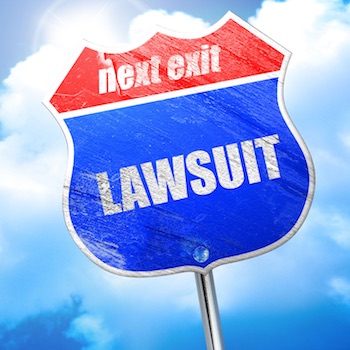 It was an average week for patent filings at the Patent Trial and Appeal Board (PTAB) and an above-average week in district courts, with 72 district court complaints filed and 18 new PTAB petitions—one petition for Post Grant Review (PGR), and 17 for Inter Partes Review (IPR).
It was an average week for patent filings at the Patent Trial and Appeal Board (PTAB) and an above-average week in district courts, with 72 district court complaints filed and 18 new PTAB petitions—one petition for Post Grant Review (PGR), and 17 for Inter Partes Review (IPR).
At the PTAB, a number of challenges were filed, including two IPRs by Tesla challenging patents owned by Iqar Inc, four IPRs by Dish challenging patents owned by Entropic Communications LLC (associated with Fortress), two IPRs by Microsoft challenging patents owned by Interdigital Patent Holdings Inc (associated with InterDigital Inc.), and two IPRs by Juniper Networks challenging patents owned by Monarch Networking Solutions LLC (associated with Acacia Research Corporation).
The PTAB instituted 12 cases, including a Samsung challenge against Headwater Research LLC (associated with Greg Raleigh). Institution was denied against 12 cases, including 3 procedural denials, and 9 cases settled, including challenges by Vmware against Lionra Technologies LLC (associated with Magnetar Capital and Longford Capital), auto manufacturer challenges against Neo Wireless LLC (associated with Fortress).
In district courts, 72 new cases were filed, and 36 cases were terminated. RecepTrexx LLC (associated with Jeffrey M. Gross) filed six new cases; Liberty Peak Ventures LLC (associated with Dominion Harbor Enterprises LLC) filed two new cases against MasterCard; Secure Ink LLC (associated with Jeffrey M. Gross) filed seven cases; Taasera Licensing LLC (associated with Quest Patent Research Corporation) filed two new cases; Convergent Assets LLC (associated with Jeffrey M. Gross) filed one new case against Snap Inc; DataCloud Technologies LLC (associated with IP Investments Group LLC) filed one new case against Western Digital Corp; and Display Technologies LLC (associated with Leigh M. Rothschild) filed one new case against Discord.
In addition, Crystal Mountain Communications LLC (associated with Ascend Innovation Management, LLC) kicked off a campaign related to 5G and wi-fi, with filings against D Link Corp, Zyxel Communications Corp, and TP-Link Corp.
Helios “DASH” Streaming Patents Struck Down Under Section 101
A judge in the Central District of California struck down four patents asserted by Helios Streaming LLC (an Avanci Video licensor) against Warner Bros. Discovery, Inc. (8:23-cv-01575). The patents, related to technologies for providing adaptive HTTP streaming services using metadata of media content, were alleged by Helios to be fundamental to industry standard Dynamic Adaptive Streaming over HTTP (“DASH”). The court found that each of the patents were directed to the idea of using certain data, rather than a particularized improvement to streaming technology, and failed to disclose anything other than generic computer components and functions. Accordingly, the patents were struck down under Section 101.
Samsung Faces Fintiv Denials
This week, the PTAB denied two IPRs filed by Samsung on procedural grounds under the Fintiv guidance (IPR2023-01096 and IPR2023-10199). While Samsung filed stipulations, both a broad stipulation with the initial IPR filing and a narrower stipulation in a reply, the Board found that Samsung’s stipulations did not remove all overlap in issues between the PTAB and the district court litigation. Samsung stipulated that it would not pursue any invalidity grounds in the district court litigation based on any instituted ground or any prior art reference that forms the basis of an instituted ground. This stipulation, which resembles an AliveCor stipulation (see IPR2021-00971, Paper 10 at 18-19), has resulted in mixed success for petitioners looking to overcome Fintiv at the PTAB.
IP Edge Entity Kicks off New Campaign
Bishop Display Tech LLC kicked off a new campaign this week with filings against LG and Heesung across 12 patents. While IP Edge affiliates did not file any cases for much of 2023, a small number of filings by various affiliates since October of 2023 shows that IP Edge has not disappeared. The patents in the filings by Bishop Display Tech relate to thin-film transistor liquid crystal displays and liquid crystal modules.
Links to the cases discussed above and more are available in the Weekly UP, which can be found here.
Image rights acquired by AdobeStock

![[IPWatchdog Logo]](https://ipwatchdog.com/wp-content/themes/IPWatchdog%20-%202023/assets/images/temp/logo-small@2x.png)

![[Advertisement]](https://ipwatchdog.com/wp-content/uploads/2024/04/UnitedLex-May-2-2024-sidebar-700x500-1.jpg)
![[Advertisement]](https://ipwatchdog.com/wp-content/uploads/2024/04/Artificial-Intelligence-2024-REPLAY-sidebar-700x500-corrected.jpg)
![[Advertisement]](https://ipwatchdog.com/wp-content/uploads/2024/04/Patent-Litigation-Masters-2024-sidebar-700x500-1.jpg)

![[Advertisement]](https://ipwatchdog.com/wp-content/uploads/2021/12/WEBINAR-336-x-280-px.png)
![[Advertisement]](https://ipwatchdog.com/wp-content/uploads/2021/12/2021-Patent-Practice-on-Demand-recorded-Feb-2021-336-x-280.jpg)
![[Advertisement]](https://ipwatchdog.com/wp-content/uploads/2021/12/Ad-4-The-Invent-Patent-System™.png)






Join the Discussion
5 comments so far. Add my comment.
concerned
February 17, 2024 06:06 amCurious:
S101 petitions are 0 for 80+? 0 for 90+? Nobody’s tactics are working. Yet there are some very sharp legal minds in those numerous petitions.
SCOTUS blew it, will not admit it, and SCOTUS is waiting for Congress to bail them out. S101 is really human nature 101.
Everything set aside, I will you all the best. Take care.
Curious
February 16, 2024 12:17 pmCurious: Are you really “B” who wrote those comments?
I’ve been writing comments like this well before B ever came onto this particular scene.
My problem with the Killian application is that the claims, as written, weren’t designed (as they should have been) to overcome a 101 rejection. As to the appeal itself, I’ve seen dozens of better-situated claims tanked by the Federal Circuit and it was painfully obvious that those claims were going to suffer the same fate. My problem with B is that instead of focusing on arguments directed to the case law created by the Federal Circuit that was inconsistent with both it’s own case law and Supreme Court case law, B decided to kitchen sink it and throw in a bunch of non-starter arguments that the Federal Circuit (predictably) pounced on.
If you give the Federal Circuit 5 arguments — 3 good ones and 2 terrible ones, they’ll spend 90% of the time ripping apart the terrible arguments and dismiss, with little more than a hand wave, the 3 good ones. This isn’t just the Federal Circuit. Examiners, the Board, and people in general will attack the weakest argument first. What makes for a good brief isn’t the number of arguments but well-developing a limited number of very good points. You should hit 2 maybe 3 issues and that is it. Anything more and you are straining the judge’s capacity.
“But Curious, a judge is a professional and should properly address all the arguments presented before him or her.”
Judges are human, and if you give them too much to properly handle, they’ll improperly handle it.
My differences with B weren’t over the long-term goal but over the tactics he was using.
concerned
February 16, 2024 03:26 amCurious: Are you really “B” who wrote those comments?
Pro Say
February 15, 2024 04:24 pmWhat Curious said.
With the off-the-rails CAFC as their backstop, these judges ignore the facts and the law; instead utilizing 101 as a broom to quickly sweep patent cases from their dockets.
They should be ashamed. But they’re not.
Patent JurisIMprudence reins.
Curious
February 15, 2024 11:43 amA judge in the Central District of California struck down four patents asserted by Helios Streaming LLC (an Avanci Video licensor) against Warner Bros. Discovery, Inc. (8:23-cv-01575). The patents, related to technologies for providing adaptive HTTP streaming services using metadata of media content, were alleged by Helios to be fundamental to industry standard Dynamic Adaptive Streaming over HTTP (“DASH”). The court found that each of the patents were directed to the idea of using certain data, rather than a particularized improvement to streaming technology, and failed to disclose anything other than generic computer components and functions. Accordingly, the patents were struck down under Section 101.
District Court judges make up any BS that they identify as the abstract idea. The sad part is that the Federal Circuit will likely rubberstamp the decision.
Whatever happened to preemption being the primary concern with so-called patent directed to abstract ideas? What, precisely, is being preempted in this instance beyond the exact invention being claimed?
Add Comment